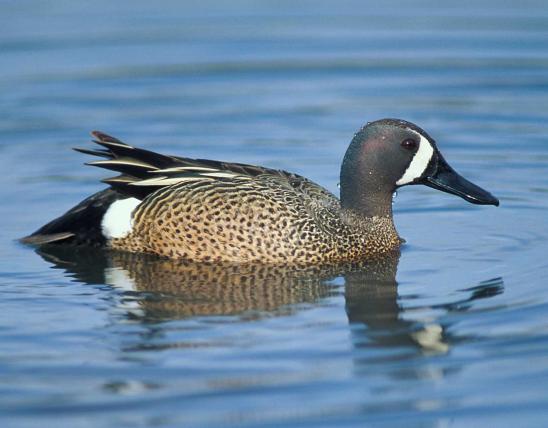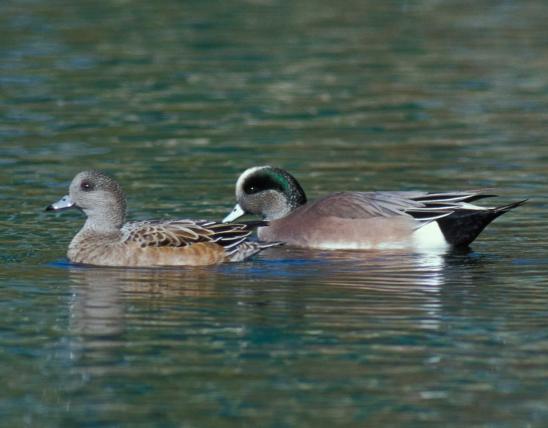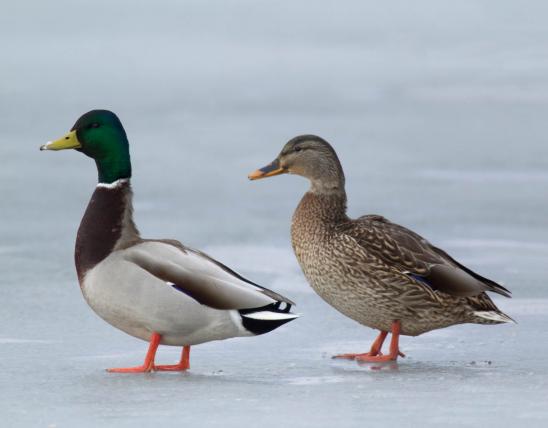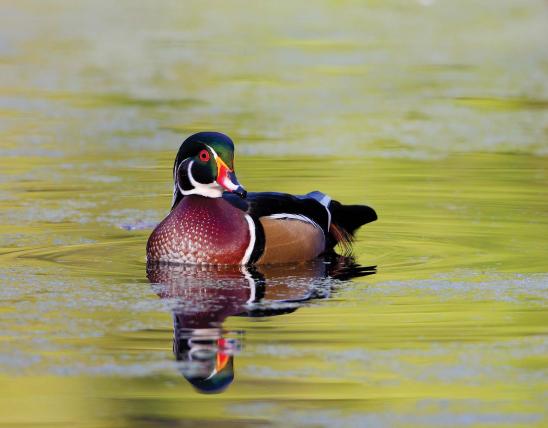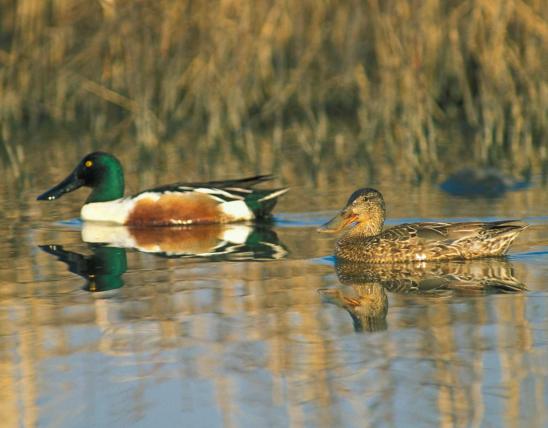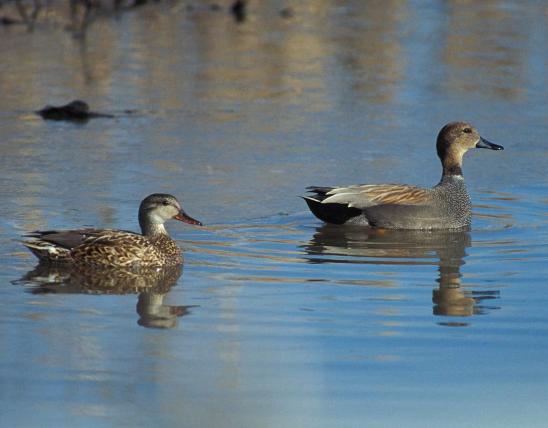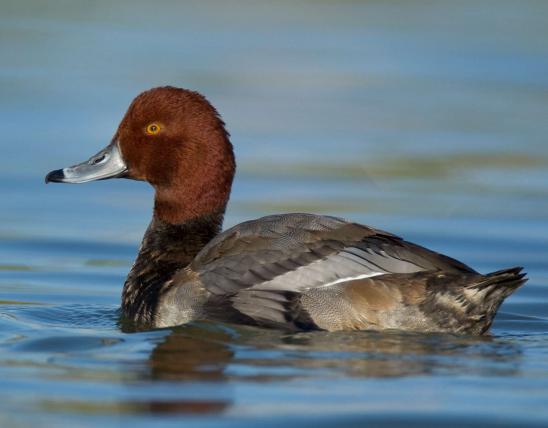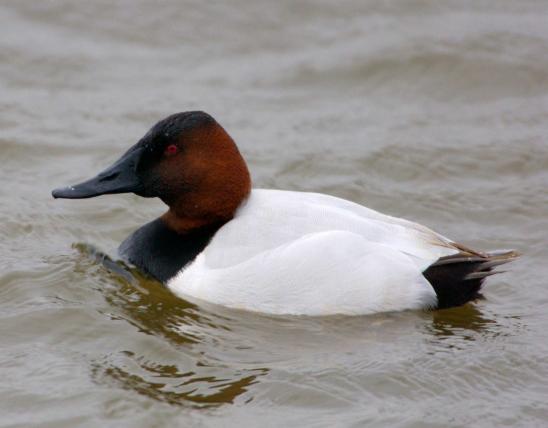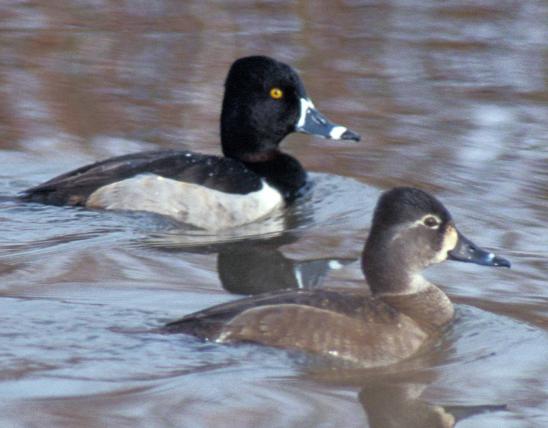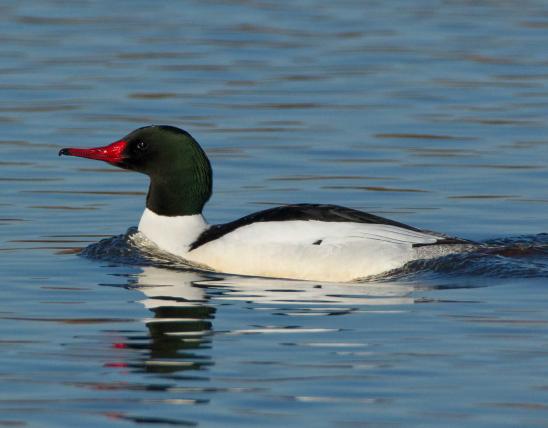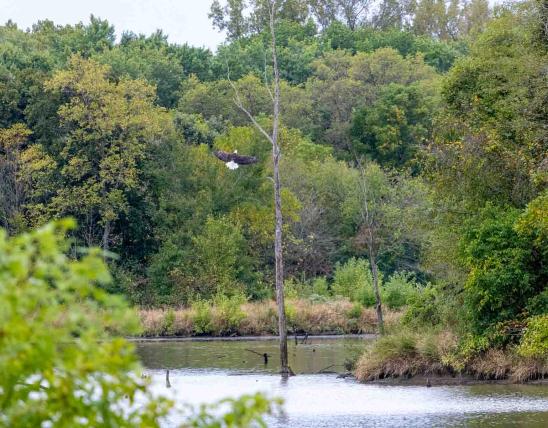
The green-winged teal adult male has a rusty head, a gray body, a green band from eye to back of neck, a tan breast, and a white stripe on the side of the upper breast that appears vertical as the bird rests on water. The female has a brown body, a green speculum (wing patch), a small bill, and a dark eye line; the undertail covert feathers are whitish and not spotted; it lacks the white spot at the base of the bill that is present in the female blue-winged teal. The female produces a shrill high whistle; the male’s call is louder and sometimes hoarser.
Similar species: Compared to the female green-winged teal, the female blue-winged teal looks grayer. In addition to the white spot at the base of the bill (noted above), it has a dark (not white) belly, there is a blue wing patch in front of the green, and the undertail coverts are darker and more heavily spotted.
Length: 14 inches (tip of bill to tip of tail).

Statewide.
Habitat and Conservation
Green-winged teal are found in marshes, swamps, ponds, lakes, reservoirs, streams, and flooded bottomland. They prefer moderately dense aquatic vegetation interspersed throughout the water and forage in shallow water with vegetation. Teal and other dabbling ducks can take flight by springing directly into the air from the water’s surface. Their wings are large in relation to their body weight, giving them the ability to lift easily from the surface of the water.
Food
This teal forages in shallow water for seeds, vegetation, and invertebrates. Teals belong to a group of ducks called dabblers, which rarely dive underwater. Instead, they float, only ducking their heads under the surface, and “tip up” with their tails pointed skyward. They sift mud through their bills to strain out small aquatic insects and other invertebrates.
Status
Common migrant. Not known to breed in the state, although individuals and pairs have been observed during the summer months. Common winter resident on unfrozen marshes in southern Missouri with fewer in northern Missouri.
Life Cycle
Green-winged teal breed in Canada, Alaska, and the northern Rockies, and they winter in Mexico and in the western and southern United States. In Missouri, we see them as they migrate in spring and fall. As with most other North American migratory waterfowl, they require plenty of healthy wetlands and permanent ponds along their migration flyways and nesting territories.
Human Connections
Their fast flight, abundance, and good-tasting meat make green-winged teal one of the most popular ducks for hunting. Like other popular migratory gamebirds, their numbers are carefully managed by state, federal, and international conservation agencies.
Ecosystem Connections
Eggs and ducklings provide food for a variety of predators, including raccoons, skunks, and foxes. Adults feed on many kinds of aquatic invertebrates as well as a variety of grains and aquatic plants.
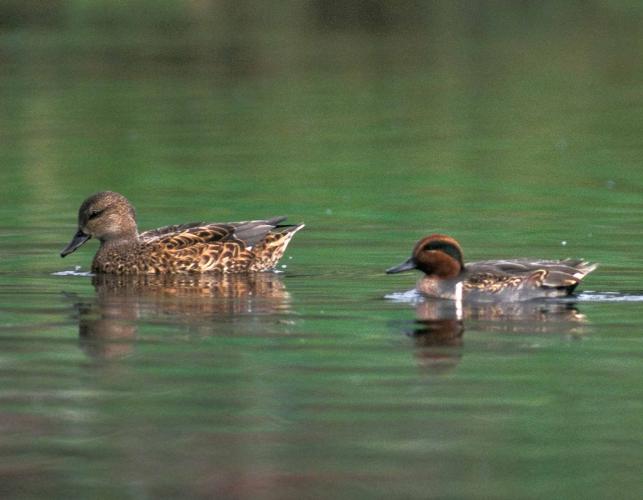
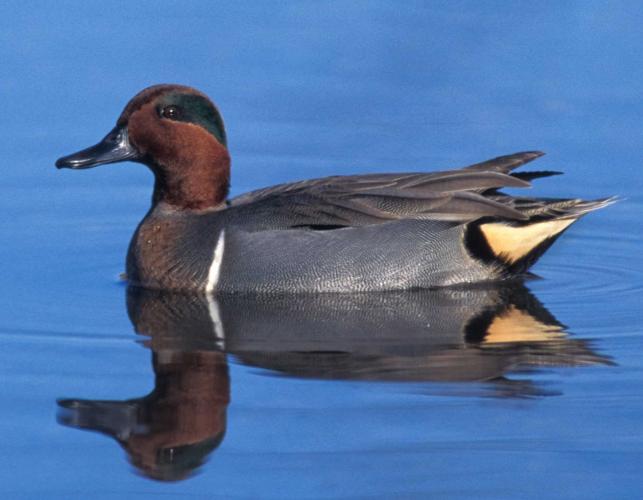



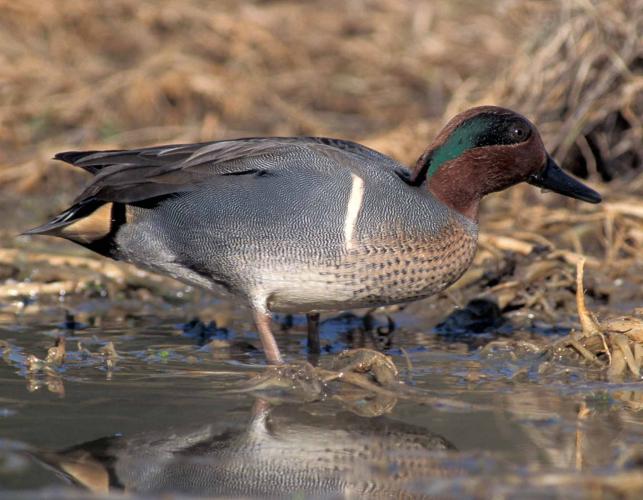
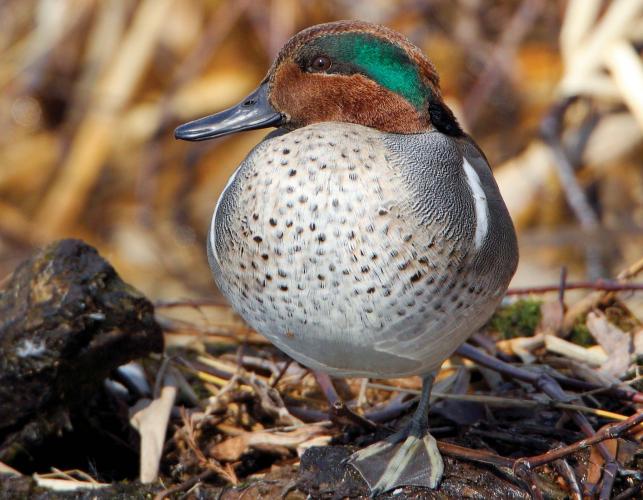
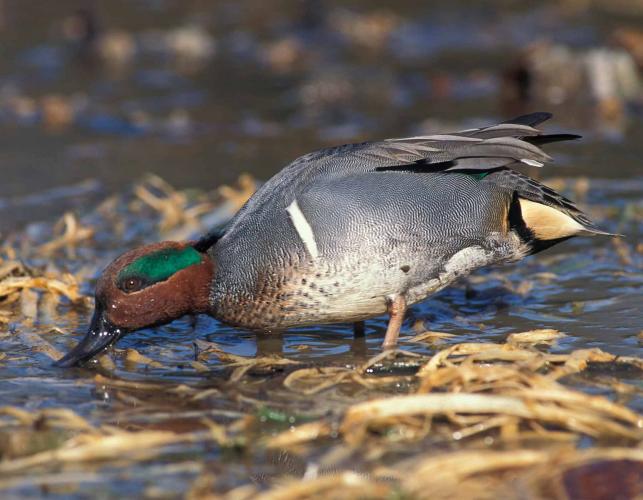
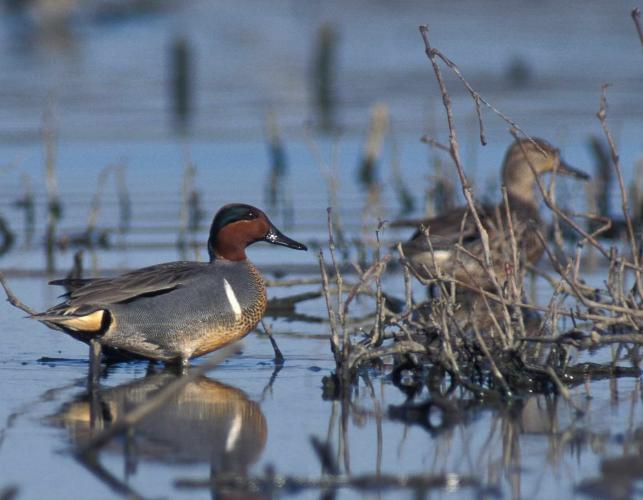
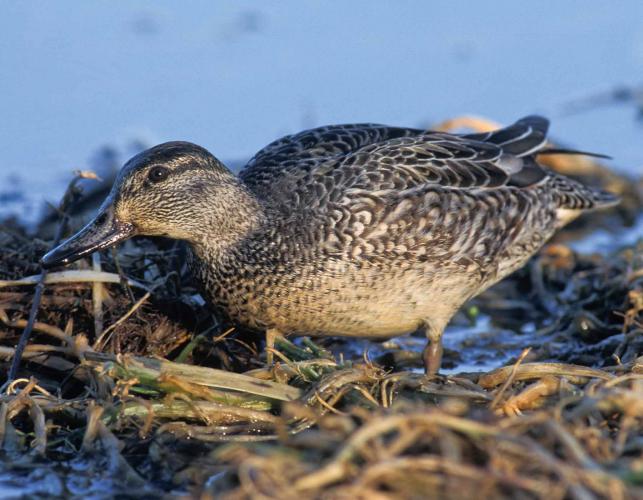
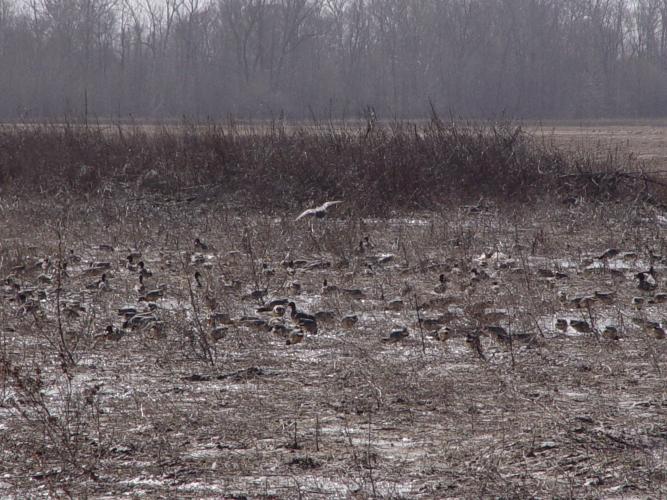
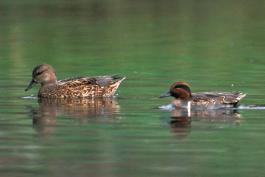
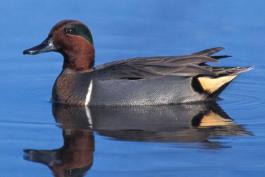
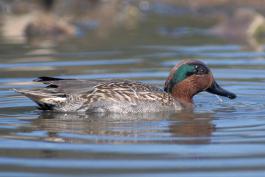

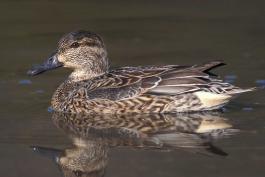

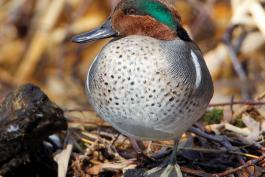
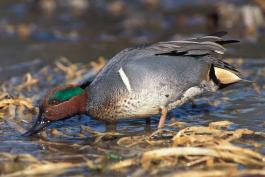
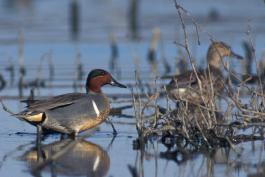
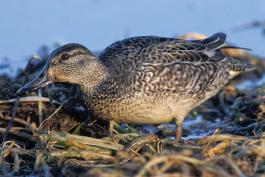

Where to See Species
About 350 species of birds are likely to be seen in Missouri, though nearly 400 have been recorded within our borders. Most people know a bird when they see one — it has feathers, wings, and a bill. Birds are warm-blooded, and most species can fly. Many migrate hundreds or thousands of miles. Birds lay hard-shelled eggs (often in a nest), and the parents care for the young. Many communicate with songs and calls.






















